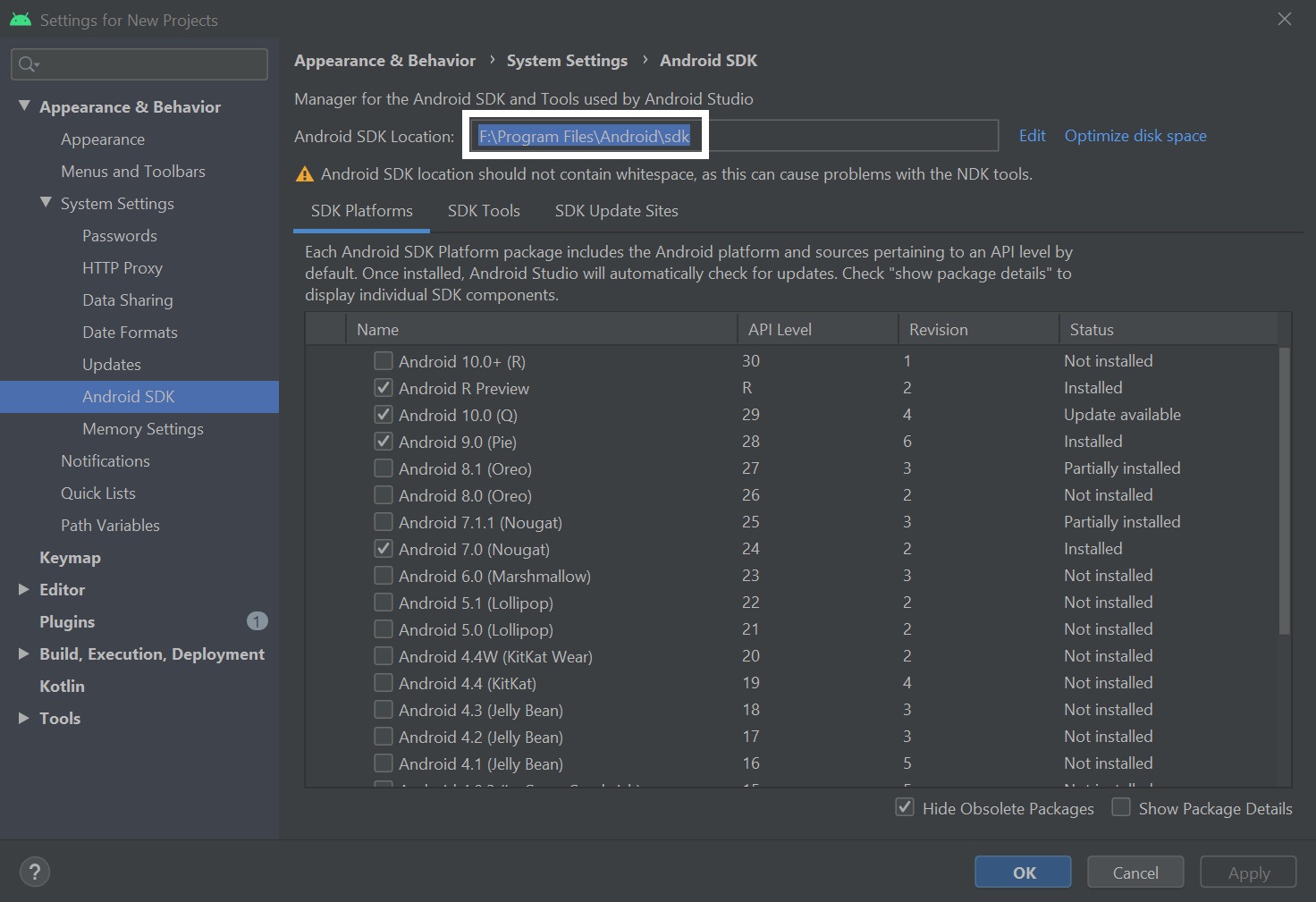

- ANDROID STUDIO SDK LOCATION WINDOWS 10 HOW TO
- ANDROID STUDIO SDK LOCATION WINDOWS 10 UPDATE
- ANDROID STUDIO SDK LOCATION WINDOWS 10 DOWNLOAD
In this guide, we learned how to solve the AVD Manager or SDK Manager missing or greyed out issue in Android Studio. Check your ANDROIDSDKROOT value C:Users92315AppDataLocalAndroidSdk check android studio path linux install android sdk via terminal add android. You will find it here C:\Users\\AppData\Local\Android\sdk.
ANDROID STUDIO SDK LOCATION WINDOWS 10 DOWNLOAD
Once the path is valid, the Android studio will download & install the required SDK on its own. If you cannot find the location or you have logged in as a different user, then you can create the folder and enter it here. The SDK is usually installed at the location C:\Users\\AppData\Local\Android\sdk. Install Android Studio Set up your Android device Set up the Android emulator Agree.
ANDROID STUDIO SDK LOCATION WINDOWS 10 UPDATE
Open the Android SDK Manager ( Tools -> SDK Manager) and check the Android SDK Location as shown in the image below AVD Manager Missing because Android SDK Path is invalidĮnsure that it points to the correct location. Update your path Run flutter doctor Android setup. For Windows, install the OEM USB drivers.Invalid or Missing SDK Path is another reason for such errors.

For macOS, no additional setup is required.

Set up an Android Device Īctual Android hardware can also be used for Ionic app development. Keeping the emulator running is the best way to ensure detection while developing Ionic apps for Android. Once the AVD is created, launch the AVD into the Android emulator. See Android version history for information on Android versions. If unsure, choose Pie (API 28) with Google Play services. To begin, run Windows Explorer and create a folder on your hard drive where the Android SDK and other components will be installed. The AVD Manager can also be opened inside Android projects in the Tools » AVD Manager menu.Ĭlick Create Virtual Device and select a suitable device definition. In the Android Studio welcome screen, click Configure » AVD Manager. For more detailed instructions and information, see the Android documentation.ĪVDs are managed with the AVD Manager. The following documentation is a quick way to get the Android emulator set up.
This path should be the Android SDK Location used in the previous section.įor apksigner and zipalign, $ANDROID_SDK_ROOT/build-toolsSet the ANDROID_SDK_ROOT environment variable. In ~/.bashrc, ~/.bash_profile, or similar shell startup scripts, make the following modifications: For Windows, check the documentation on setting and persisting environment variables in terminal sessions. Configure -> Project Defaults -> Project Structure -> SDKs on left column -> Android SDK Home Path -> give the exact path as you did on local.properties and.

The following instructions are for macOS and Linux. Before they can be used, some environment variables must be set. The Android SDK ships with useful command-line tools. To install system images and other minor SDK platform packages, you may need to ensure Show Package Details is checked at the bottom of the SDK Manager.įor future reference, the Android SDK can be managed with Android Studio in the Configure » SDK Manager menu of the Android Studio welcome screen or Tools » SDK Manager inside Android projects. Keep note of the Android SDK Location.īy default, the latest stable SDK Platform is installed, which includes a collection of packages required to target that version of Android. In the SDK Components Setup screen, finish installing the SDK. The IDE should detect that the Android SDK needs to be installed. More detailed installation instructions can be found in the User Guide. Installing Android Studio ĭownload Android Studio from the Android website. Instead, it should only really be used to build and run your apps for the native Android platform and to manage the Android SDK and virtual devices. We don't recommend using Android Studio for developing Ionic apps.


 0 kommentar(er)
0 kommentar(er)
